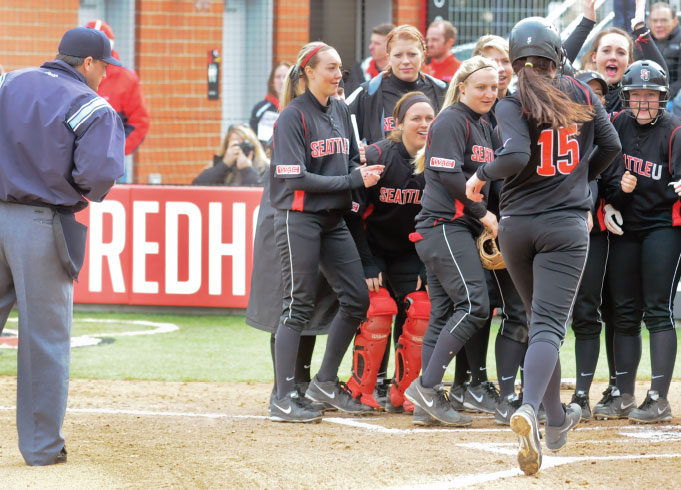In a televised NCAA game last May, a player was so excited about hitting an out-of-the-park home run that she jumped over home plate to greet her teammates, who were waiting for her in that area. The TV video showed the umpire watching her miss the plate and the catcher pointing out that she missed the plate.
All softball rulebooks state two methods by which the defense can make an appeal — live-ball appeal and dead-ball appeal. The above situation resulted in a dead-ball appeal because the ball was declared out of play during the playing action. One thing we know for sure: During a dead-ball appeal, a fielder cannot appeal by touching the base while in possession of the ball, or tagging the runner (this is what the catcher did as soon as she got a new ball from the plate umpire). A dead-ball appeal must be made verbally to an umpire. The batter-runner in this situation was ruled out.
But what is the proper way for the defense to appeal the play described above and what procedure should the umpire use to honor this appeal? What happens if her teammates or a coach physically assists the home-run hitter back toward the plate?
How to administer
There are slight differences in the codes as to how an umpire should administer this type of dead-ball appeal.
NCAA issued an interpretation to cover this exact play as it caused quite a discussion in the immediate aftermath. The interpretation stated:
- The runner can return and touch home plate if she has not entered the dugout.
- She may not go back to touch any other missed base; the only base she can return to on an out-of-the-park home run is home plate.
- The appeal cannot be made until the ball is put back into the game by an umpire.
- Once the umpire places a new ball into the game, any fielder (with or without the ball) may ask the umpire to make a decision on the appeal of not touching home plate.
The first two bullets above for NCAA are also true for NFHS, USA Softball and USSSA. Otherwise, these codes have similar rules. When a ball goes out of play, runners must be given the opportunity to complete their baserunning responsibilities. The umpire shall be the sole judge as to how long that opportunity is — watch the runner and use common sense.
In those three codes, the umpire does not have to put the ball back in play or declare “play ball” before this appeal is made. In USA Softball, any infielder, including the pitcher and catcher, with or without the ball, may make a verbal appeal. In NFHS and USSSA, a coach or any defensive player may make this appeal (NFHS 2-1-3; USA Softball 8-7-I Effect – 3 and R/S 1-C; USSSA rule 9-3).
Physically assisting a runner
In all codes except USSSA, a runner who has missed home plate may not be physically assisted to go back and touch the plate. USA Softball states in an exception to rule 8-7E: If the runner is physically assisted by any team member, the runner is out and the run is nullified. NFHS has issued this interpretation: Although this is a dead-ball situation the baserunners still have live-ball baserunning responsibilities; so, if someone other than another runner physically assists her she could still be ruled out under rule 8-6-5.
NCAA has rules which state that when a coach or anyone other than a runner who has not yet crossed the plate physically assists a runner, the runner is out.
The interpretation from USSSA: Rule 8.18Z states any runner is out when anyone other than another runner physically assists them while the ball is in play. Some codes have a dead-ball provision which covers this situation. USSSA does not.
Summary
The only difference among the codes with administering this appeal is that, in NCAA, the umpire must put a ball back in play before the appeal can be made. In the other codes the umpire may honor an appeal after the umpire has judged the runner has had the opportunity to return to touch the plate, but has not taken that opportunity.
Physically assisting the runner to return to the plate is not allowed in USA Softball, NCAA and NFHS. Any assistance by offensive team members results in the runner being called out. In USSSA, team members may assist the runner back to the plate.
What's Your Call? Leave a Comment:
Note: This article is archival in nature. Rules, interpretations, mechanics, philosophies and other information may or may not be correct for the current year.
This article is the copyright of ©Referee Enterprises, Inc., and may not be republished in whole or in part online, in print or in any capacity without expressed written permission from Referee. The article is made available for educational use by individuals.


















